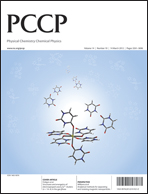An extensive set of experimental measurements on the dynamics of the H+ + D2 and D+ + H2 ion–molecule reactions is compared with the results of quantum mechanical (QM), quasiclassical trajectory (QCT), and statistical quasiclassical trajectory (SQCT) calculations. The dynamical observables considered include specific rate coefficients as a function of the translational energy, ET, thermal rate coefficients in the 100–500 K temperature range. In addition, kinetic energy spectra (KES) of the D+ ions reactively scattered in H+ + D2 collisions are also presented for translational energies between 0.4 eV and 2.0 eV. For the two reactions, the best global agreement between experiment and theory over the whole energy range corresponds to the QCT calculations using a Gaussian binning (GB) procedure, which gives more weight to trajectories whose product vibrational action is closer to the actual integer QM values. The QM calculations also perform well, although somewhat worse over the more limited range of translational energies where they are available (ET < 0.6 eV and ET < 0.2 eV for the H+ + D2 and D+ + H2 reactions, respectively). The worst agreement is obtained with the SQCT method, which is only adequate for low translational energies. The comparison between theory and experiment also suggests that the most reliable rate coefficient measurements are those obtained with the merged beams technique. It is worth noting that none of the theoretical approaches can account satisfactorily for the experimental specific rate coefficients of H+ + D2 for ET ≤ 0.2 eV although there is a considerable scatter in the existing measurements. On the whole, the best agreement with the experimental laboratory KES is obtained with the simulations carried out using the state resolved differential cross sections (DCSs) calculated with the QCT-GB method, which seems to account for most of the observed features. In contrast, the simulations with the SQCT data predict kinetic energy spectra (KES) considerably cooler than those experimentally determined.

You have access to this article
 Please wait while we load your content...
Something went wrong. Try again?
Please wait while we load your content...
Something went wrong. Try again?


 Please wait while we load your content...
Please wait while we load your content...